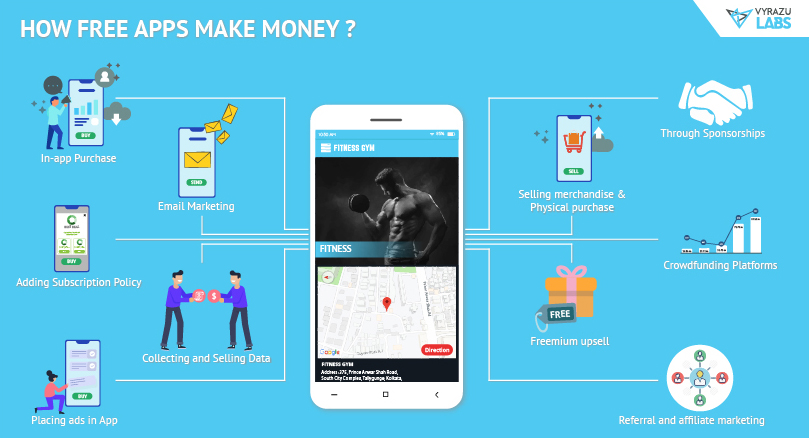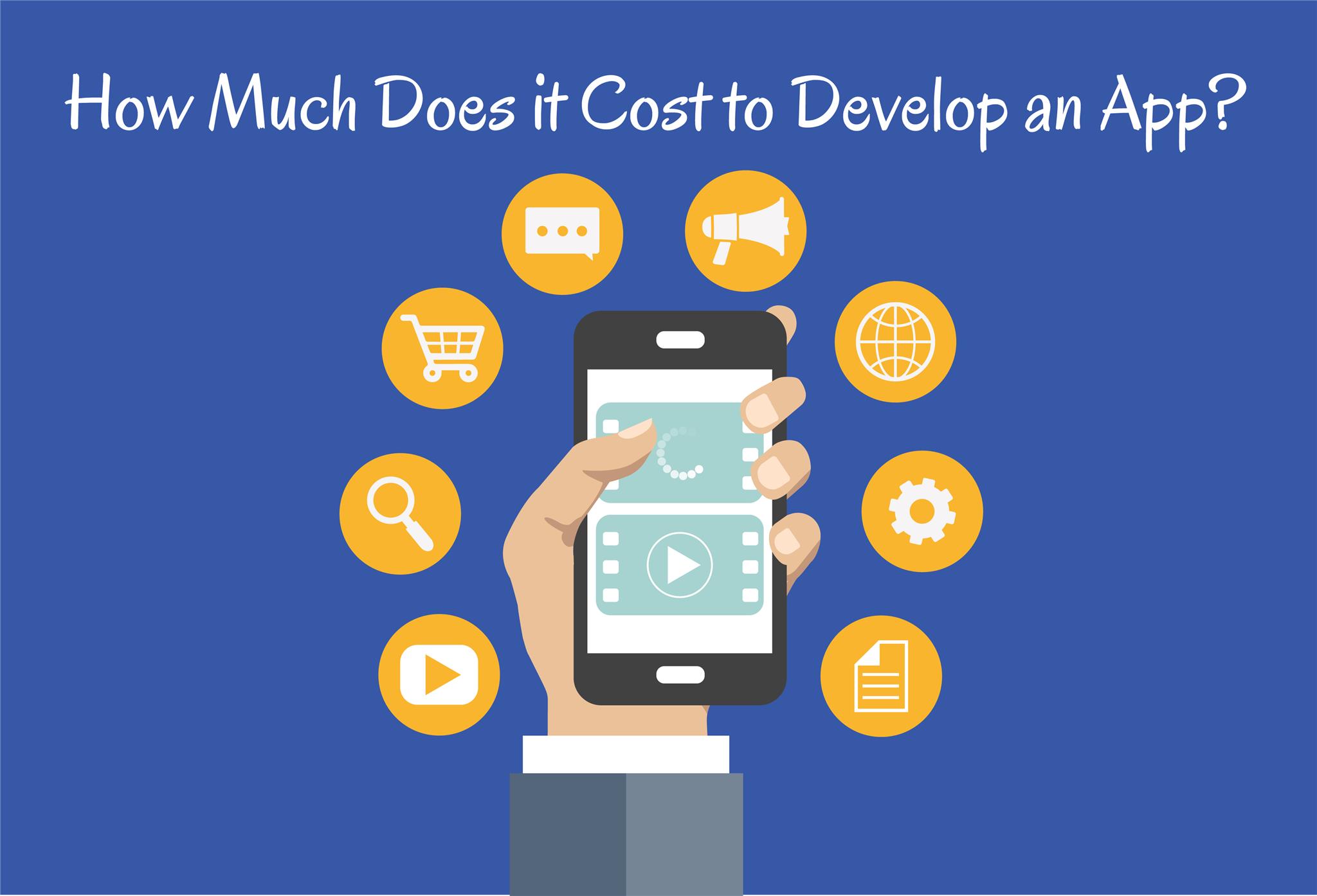Cracking the Code: Understanding App Monetization Strategies
App monetization is a crucial aspect of the mobile app industry, as it enables developers to generate revenue from their creations. With millions of apps available in app stores, understanding how to effectively monetize an app is essential for success. So, how much money do apps make? The answer lies in the monetization strategy employed. There are several types of monetization strategies, including in-app purchases, advertising, and subscriptions. In-app purchases allow users to buy virtual goods or premium features within an app, while advertising generates revenue through display ads or sponsored content. Subscriptions, on the other hand, provide users with access to exclusive content or premium features for a recurring fee.
Developers can choose from a variety of monetization strategies, depending on their app’s genre, target audience, and revenue goals. For example, games often employ in-app purchases to sell virtual goods or power-ups, while productivity apps may use subscriptions to offer premium features. Understanding the strengths and weaknesses of each monetization strategy is vital to maximizing revenue potential. By selecting the right strategy, developers can create a profitable app that attracts and retains users.
App monetization is a complex process that requires careful planning and execution. Developers must consider factors such as user engagement, retention, and feedback when designing their monetization strategy. By doing so, they can create an app that not only generates revenue but also provides value to users. As the mobile app industry continues to evolve, understanding app monetization strategies will become increasingly important for developers seeking to succeed in this competitive market.
How to Turn Your App into a Money-Making Machine
To increase an app’s revenue potential, developers must focus on creating a engaging and retention-driven user experience. This can be achieved by implementing features that encourage users to return to the app, such as push notifications, in-app rewards, and social sharing options. By fostering a loyal user base, developers can drive revenue growth and improve their app’s overall profitability. But how much money do apps make from these strategies? The answer lies in the data. According to recent studies, apps that prioritize user engagement and retention can see a significant increase in revenue, with some apps experiencing up to 50% more revenue than those that do not.
Another key factor in driving revenue growth is user feedback. By collecting and incorporating user feedback, developers can identify areas for improvement and make data-driven decisions to optimize their app’s monetization strategy. This can include adjusting pricing models, adding new features, or modifying existing ones to better meet user needs. By prioritizing user feedback, developers can create an app that meets the needs of their target audience and drives revenue growth.
In addition to user engagement and feedback, developers must also consider the role of analytics in driving revenue growth. By tracking key performance indicators (KPIs) such as user acquisition costs, retention rates, and customer lifetime value, developers can gain valuable insights into their app’s revenue potential. This data can be used to inform monetization strategies, optimize user experience, and drive revenue growth. By leveraging analytics and data-driven decision making, developers can turn their app into a money-making machine and maximize their revenue potential.
The Top-Grossing Apps: What Sets Them Apart
So, how much money do apps make? The answer can be found in the success stories of top-grossing apps like Pokémon Go, Clash of Clans, and Candy Crush Saga. These apps have generated billions of dollars in revenue, and their success can be attributed to several key factors. One common characteristic among these apps is their ability to create a engaging and addictive user experience. Pokémon Go, for example, used augmented reality to create a unique and immersive experience that captivated users worldwide. Clash of Clans, on the other hand, used a freemium model to offer in-app purchases and subscriptions, generating millions of dollars in revenue.
Another key factor in the success of these apps is their ability to monetize their user base effectively. Candy Crush Saga, for example, uses a combination of in-app purchases and advertising to generate revenue. The app’s developer, King Digital Entertainment, has reported that the app generates over $1 million in revenue per day. This is a staggering amount, and it highlights the potential for apps to generate significant revenue through effective monetization strategies.
So, what can developers learn from the success of these top-grossing apps? One key takeaway is the importance of creating a engaging and addictive user experience. This can be achieved through the use of innovative features, such as augmented reality or social sharing options. Another key takeaway is the importance of effective monetization strategies. Developers should consider using a combination of in-app purchases, subscriptions, and advertising to generate revenue. By following these strategies, developers can increase their app’s revenue potential and join the ranks of the top-grossing apps.
App Revenue Streams: A Deep Dive
When it comes to generating revenue from mobile apps, there are several revenue streams that developers can tap into. In-app purchases, subscriptions, advertising, and sponsored content are just a few examples of the many revenue streams available. But how much money do apps make from these streams? The answer varies widely depending on the type of app, its target audience, and the monetization strategy employed.
In-app purchases, for example, can be a highly lucrative revenue stream for apps that offer virtual goods or premium features. According to a report by Statista, in-app purchases accounted for over 50% of the total revenue generated by mobile apps in 2020. Subscriptions, on the other hand, can provide a steady stream of revenue for apps that offer exclusive content or services. The New York Times, for example, generates millions of dollars in revenue each year from its subscription-based model.
Advertising is another revenue stream that can be highly effective for apps that have a large user base. Google AdMob, for example, offers a range of advertising formats that can be integrated into mobile apps, including banner ads, interstitial ads, and rewarded video ads. Sponsored content is another revenue stream that can be effective for apps that have a highly engaged user base. Brands are willing to pay top dollar to reach their target audience through sponsored content, and apps that can deliver this audience can generate significant revenue.
So, how can developers maximize their app’s revenue potential from these revenue streams? One key strategy is to diversify their revenue streams and not rely on just one or two sources of revenue. By offering a range of revenue streams, developers can reduce their dependence on any one stream and increase their overall revenue potential. Another key strategy is to optimize their app’s user experience and ensure that it is highly engaging and addictive. This can help to increase user retention and drive revenue growth.
The Role of In-App Purchases in App Revenue
In-app purchases are a popular monetization strategy for mobile apps, allowing users to buy virtual goods, premium features, or subscriptions within the app. But how much money do apps make from in-app purchases? The answer varies widely depending on the type of app, its target audience, and the pricing strategy employed. According to a report by Gartner, in-app purchases accounted for over 90% of the total revenue generated by mobile apps in 2020.
One of the key benefits of in-app purchases is that they allow developers to generate revenue from users who may not have paid for the app upfront. This can be especially effective for apps that offer a free version with limited features, and a premium version with additional features or content. However, in-app purchases can also be a double-edged sword, as they can be seen as intrusive or annoying by some users.
To maximize revenue from in-app purchases, developers must carefully consider their pricing strategy. This includes setting prices that are competitive with other apps in the same category, as well as offering discounts or promotions to incentivize users to make purchases. User psychology also plays a crucial role in driving in-app purchase revenue, as developers must understand what motivates users to make purchases and design their app accordingly.
For example, some apps use a technique called “price anchoring” to make their in-app purchases seem more affordable. This involves offering a higher-priced option alongside a lower-priced option, to make the lower-priced option seem more reasonable by comparison. Other apps use “scarcity” tactics, such as limited-time offers or exclusive content, to create a sense of urgency and encourage users to make purchases.
By understanding the role of in-app purchases in app revenue, and by carefully designing their pricing strategy and user experience, developers can maximize their app’s revenue potential and create a successful and profitable business.
App Store Optimization: Boosting Visibility and Revenue
App store optimization (ASO) is a crucial step in increasing app visibility, downloads, and revenue. But how much money do apps make from ASO? The answer lies in the numbers. According to a report by Statista, apps that optimize their app store listings can see an increase of up to 25% in downloads and revenue.
So, how can developers optimize their app store listings for better visibility and revenue? One key strategy is to optimize app titles, descriptions, and keywords. This includes using relevant keywords in the app title and description, as well as creating a compelling and informative app description that showcases the app’s features and benefits.
Another key strategy is to use eye-catching and relevant app icons and screenshots. This includes creating an app icon that stands out from the competition, as well as creating screenshots that showcase the app’s features and user interface.
Developers can also use ASO tools and analytics to track their app’s performance and identify areas for improvement. This includes tracking app downloads, revenue, and user engagement, as well as analyzing user reviews and feedback to identify areas for improvement.
By optimizing their app store listings and using ASO tools and analytics, developers can increase their app’s visibility, downloads, and revenue. This can help to drive business growth and increase revenue potential.
For example, a study by Apptopia found that apps that optimized their app store listings saw an average increase of 15% in revenue. Another study by MobileDevHQ found that apps that used ASO tools and analytics saw an average increase of 20% in downloads and revenue.
By understanding the importance of ASO and using the right strategies and tools, developers can maximize their app’s revenue potential and drive business growth.
Measuring App Success: Key Performance Indicators (KPIs)
To determine how much money do apps make, developers need to track key performance indicators (KPIs) that measure their app’s success. These KPIs include revenue, user acquisition costs, retention rates, and customer lifetime value.
Revenue is the most obvious KPI, as it directly measures the amount of money an app generates. However, it’s not the only KPI that matters. User acquisition costs, for example, measure the cost of acquiring new users, and retention rates measure the percentage of users who continue to use the app over time.
Customer lifetime value (CLV) is another important KPI, as it measures the total value of a customer over their lifetime. This includes not only the revenue generated by the customer but also the costs associated with acquiring and retaining them.
By tracking these KPIs, developers can gain a deeper understanding of their app’s performance and make data-driven decisions to improve its revenue potential. For example, if an app has a high user acquisition cost but a low retention rate, the developer may need to adjust their marketing strategy to reduce costs and improve user engagement.
Additionally, developers can use KPIs to compare their app’s performance to industry benchmarks and identify areas for improvement. This can help them to optimize their app’s monetization strategy and increase revenue.
For instance, a study by App Annie found that the average revenue per user (ARPU) for mobile apps is around $1.50 per month. However, top-grossing apps can generate significantly more revenue per user, with some apps generating up to $10 per user per month.
By understanding these KPIs and using them to inform their monetization strategy, developers can increase their app’s revenue potential and achieve long-term success.
Conclusion: Maximizing App Revenue Potential
In conclusion, maximizing app revenue potential requires a deep understanding of app monetization strategies, user engagement, and revenue streams. By understanding how much money do apps make from different monetization strategies, developers can create a successful and profitable app.
Throughout this article, we have discussed the different types of monetization strategies, including in-app purchases, advertising, and subscriptions. We have also analyzed the success stories of top-grossing apps and identified common characteristics and strategies that contribute to their financial success.
Additionally, we have delved into the different revenue streams available to app developers, including in-app purchases, subscriptions, advertising, and sponsored content. We have also discussed the importance of app store optimization (ASO) in increasing app visibility, downloads, and revenue.
Finally, we have introduced the key performance indicators (KPIs) that app developers should track to measure their app’s success, including revenue, user acquisition costs, retention rates, and customer lifetime value.
By understanding these concepts and strategies, developers can create a successful and profitable app that generates significant revenue. Remember, the key to success is to understand your target audience, create a engaging and addictive user experience, and use the right monetization strategies to maximize revenue potential.
So, how much money do apps make? The answer is, it depends on the app’s monetization strategy, user engagement, and revenue streams. However, by following the tips and best practices outlined in this article, developers can increase their app’s revenue potential and achieve long-term success.






